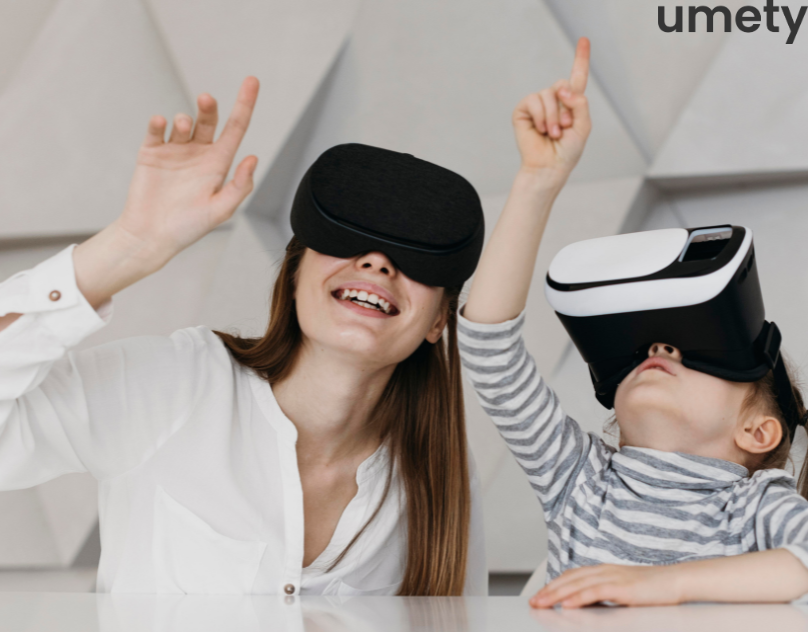
5 Impactful strategies for teaching English Language Learners in VR
Imagine the awe of a child as they strap on a VR headset for the first time, diving into a world where they can explore the streets of London, converse with virtual locals in New York, or navigate the nuances of ordering a meal in a busy Sydney cafe. All this from the comfort of their classroom or home. In recent years, technology has bridged the gap between imagination and reality, transforming traditional classrooms into boundless landscapes of learning. Among these groundbreaking tools, virtual reality stands out, redefining the realms of education and making learning more interactive and immersive than ever.
For English Language Learners, this isn’t just an advancement; it’s a revolution. English Language learning in VR offers an unprecedented platform where they can absorb, interact with, and experience the language in its natural habitat.
Leveraging modern technology for language learning
In the vast landscape of educational tools and methodologies, one that stands out for its innovative approach to language learning: Umety’s ELL (English Language Learning) series. As we journey through the many strategies that VR offers, it’s essential to spotlight this series, which seamlessly blends technological advancements with language learning in the most practical manner.
Umety’s ELL series has established itself as a front-runner in the VR language learning domain. With its emphasis on personalized learning and a rich plethora of scenarios, it offers an unparalleled experience for English language learners. Here are five impactful strategies educators can employ to harness the potential of VR when teaching ELL students.
-
Contextual immersion
What: Contextual immersion allows learners to experience language in real-world settings, which can help in reinforcing vocabulary and comprehension.
How: Take advantage of English language learning in VR by transporting ELL students to virtual environments like markets, restaurants, airports, or neighborhoods. With Umety’s diverse range of scenarios, learners can relate to daily life situations, work environments, and even recreational activities, enriching their contextual understanding of the language.
2. Interactive role-playing
What: Role-playing enables students to practice English in different personas and scenarios, helping them become more fluent and confident.
How: In a VR classroom, there are scenarios where students play roles such as a tourist asking for directions or a job applicant during an interview. This not only enhances their speaking and listening skills but also leverages the vast array of scenarios provided by Umety.
3. Cultural exploration
What: A significant aspect of language learning is understanding the cultural context in which the language operates.
How: Within the virtual realm of English Language learning in VR, there are scneraios where students take tours of English-speaking countries. As they traverse through Umety’s simulations, students are introduced to the intricate cultural tapestries of different English-speaking regions, deepening their language comprehension.
4. Feedback and correction in real-time
What: Immediate feedback is essential for language learners.
How: Integrate tools like the advanced voice recognition technology are offered by Umety. This ensures that learners receive instant feedback on pronunciation, enabling them to correct and learn on-the-spot.
5. Collaborative learning
What: Learning collaboratively often boosts retention and understanding.
How: Create VR spaces where learners can interact. Umety’s structured learning pathways, ranging from Fundamental to Advanced levels, allow students of similar proficiencies to engage and collaborate effectively.
In the vast panorama of educational tools, virtual reality shines as a beacon of potential and promise. The traditional confines of classroom learning have been expanded beyond our wildest dreams, and for English Language Learners, this is nothing short of transformative. As platforms like Umety’s ELL series illustrate, the ability to experience language in context, to immerse oneself in culturally-rich settings, and to practice communication in real-time scenarios brings a depth to learning that textbooks and traditional methods could never achieve.
English Language learning in VR, as showcased by Umety’s innovative approach, stands as a testament to the future of language education. As we stand on the cusp of this technological renaissance, it is essential for educators, institutions, and even students to embrace these innovations. By integrating solutions like Umety’s ELL series into the ELL curriculum, we are not just enhancing learning; we are reimagining it, creating a global community of learners who are more connected, confident, and competent in their linguistic journeys.



